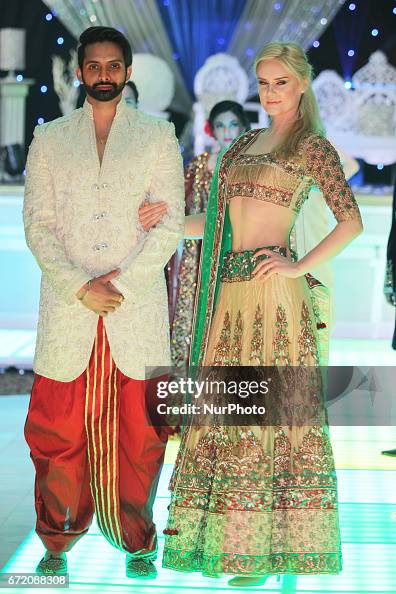Just How to Style Eastern Wear Pakistan Clothes for Contemporary Elegance
Just How to Style Eastern Wear Pakistan Clothes for Contemporary Elegance
Blog Article
Experience the Beauty of Typical Eastern Clothes
Embark on a journey with the detailed world of typical Eastern attire, where each garment informs a story woven with social richness and historical value. Join us as we unravel the tricks behind these elegant items and find the appeal of Eastern attire that has captivated generations. eastern wear pakistan.
Background of Eastern Clothes
Eastern clothing has an abundant background that dates back centuries, showing the varied cultures and customs of areas such as Asia and the Middle East. In Asia, standard clothes varies substantially from the vibrant saris worn in India to the stylish bathrobe of Japan.
Throughout background, Eastern attire has not just offered as a type of garments yet additionally as an icon of social identity and heritage. Today, Eastern outfit continues to develop, blending traditional elements with contemporary fashion patterns to create special and ageless designs.
Value of Needlework
Needlework plays an essential duty in typical Eastern attire, adding elaborate information and cultural significance to garments that have actually been passed down through generations. In Eastern cultures, embroidery is not merely decorative yet holds deep symbolic meanings. Each stitch and pattern can convey tales, ideas, and even social status.
The art of needlework in typical Eastern clothing is a labor-intensive procedure that calls for ability and patience. Very competent craftsmens thoroughly hand embroider complex designs onto textiles utilizing techniques that have actually been improved over centuries. These embroidered designs usually show the rich social heritage of the region they stem from, showcasing concepts inspired naturally, folklore, or historic events.

Lavish Fabrics Utilized
Glamorous fabrics play an essential role in boosting the style and opulence of standard attire across varied Eastern societies. Silk, renowned for its gentleness and shine, is a favored choice for many traditional garments as a result of its elegant feeling and capacity to curtain gracefully. In nations like India, China, and Japan, silk has a lengthy background of being made use of in traditional outfit, signifying riches and status.
One more commonly utilized elegant fabric is brocade, defined by complex patterns woven into the product. Brocade adds a touch of sophistication to garments and is often seen in ritualistic attire and official wear. Velvet, with its luxurious appearance and rich appearance, is likewise a prominent selection for typical clothes in Eastern cultures, specifically for joyful occasions and special occasions.
In addition, organza, satin, and chiffon are frequently used for their flowing and lightweight high qualities, including a sense of special and style to garments. These lavish fabrics not only raise the visual charm of conventional Eastern clothing however likewise contribute to the overall official source appeal and charm of the user.
Workmanship Methods
Traditional outfit in different cultures showcases flawless workmanship methods that are passed down through generations, highlighting the skill and virtuosity involved in producing these elegant garments. Each needlework, embellishment, and stitch is diligently crafted to create timeless items that symbolize the cultural heritage and practices of the area. The craftsmanship strategies used in typical Eastern attire often involve complex handwork, such as hand weaving, hand embroidery, and hand beading, which require precision and interest to detail.
Artisans who focus on these methods undertake years of training to excellent their abilities and understand the traditional techniques of garment building. Using premium products incorporated with expert workmanship results in garments that not just look aesthetically magnificent yet likewise stand the examination of time. The dedication to preserving these workmanship methods ensures that each item of typical Eastern clothes is an artwork, mirroring the abundant social history and heritage of the area.
Classic Beauty and Appeal

The elaborate embroidery, fragile beadwork, and lavish materials used in typical Eastern attire contribute to its unrivaled beauty. The careful handiwork passed down with generations guarantees that every piece shows and tells a story refinement and poise.
In addition, the timeless shapes and graceful draping of traditional Eastern clothes include in its enduring appeal. The flowing lines and stylish styles create a feeling of harmony and equilibrium that is both visually enticing and mentally exciting.
In essence, the classic sophistication and beauty of conventional Eastern outfit work as a testimony to the skill and creativity of the craftsmen that dedicate their lives to preserving these charming sartorial practices. - eastern wear pakistan
Verdict
To conclude, the beauty of conventional Eastern clothing is a testament to the rich history, cultural Full Article value, and elaborate workmanship of the area. From the fancy needlework to the glamorous textiles and classic charm, each garment tells a story and shows the cultural identification of its beginnings. Accepting Eastern outfit enables one to appreciate the artistry and style that have actually been given with generations, producing exciting and really elegant items.
Embark on a journey via the complex world of conventional Eastern clothing, where each garment tells a story woven with social richness and historical importance.Needlework plays a crucial role in typical Eastern attire, including complex details and cultural importance to garments that have actually been passed down via generations.Luxurious textiles play an essential function in improving the elegance and opulence of typical clothes across varied Eastern cultures. The workmanship strategies utilized in traditional Eastern clothing often include complex handwork, such as hand weaving, hand embroidery, and hand beading, which call for accuracy and interest to detail.
In final thought, the sophistication of conventional Eastern attire is a testimony to the rich background, social importance, and intricate craftsmanship of the area.
Report this page